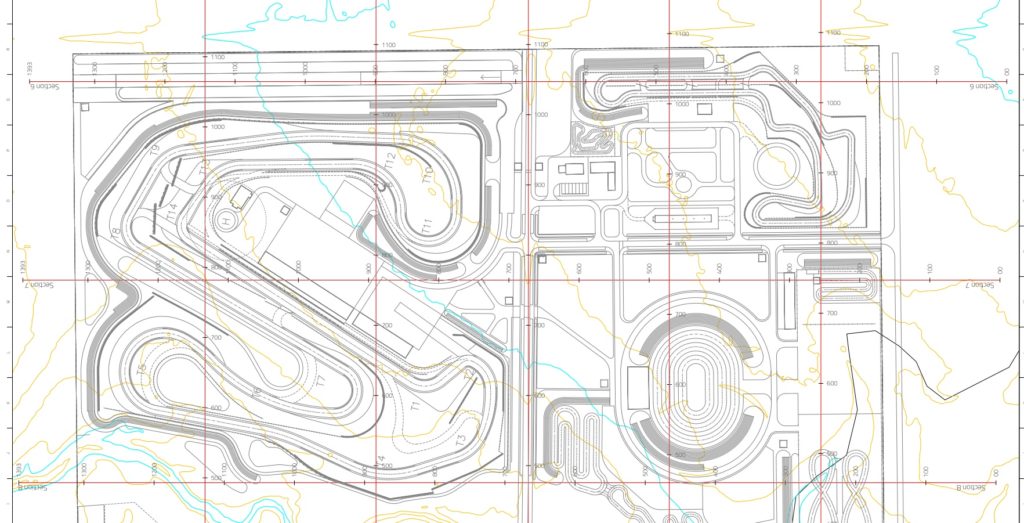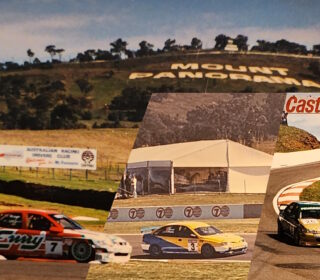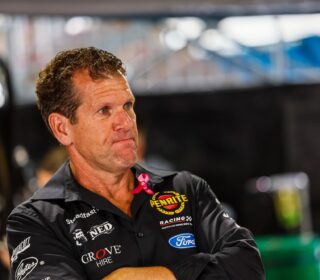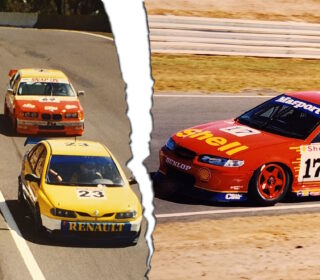The Dollars and Development of a New Race Track
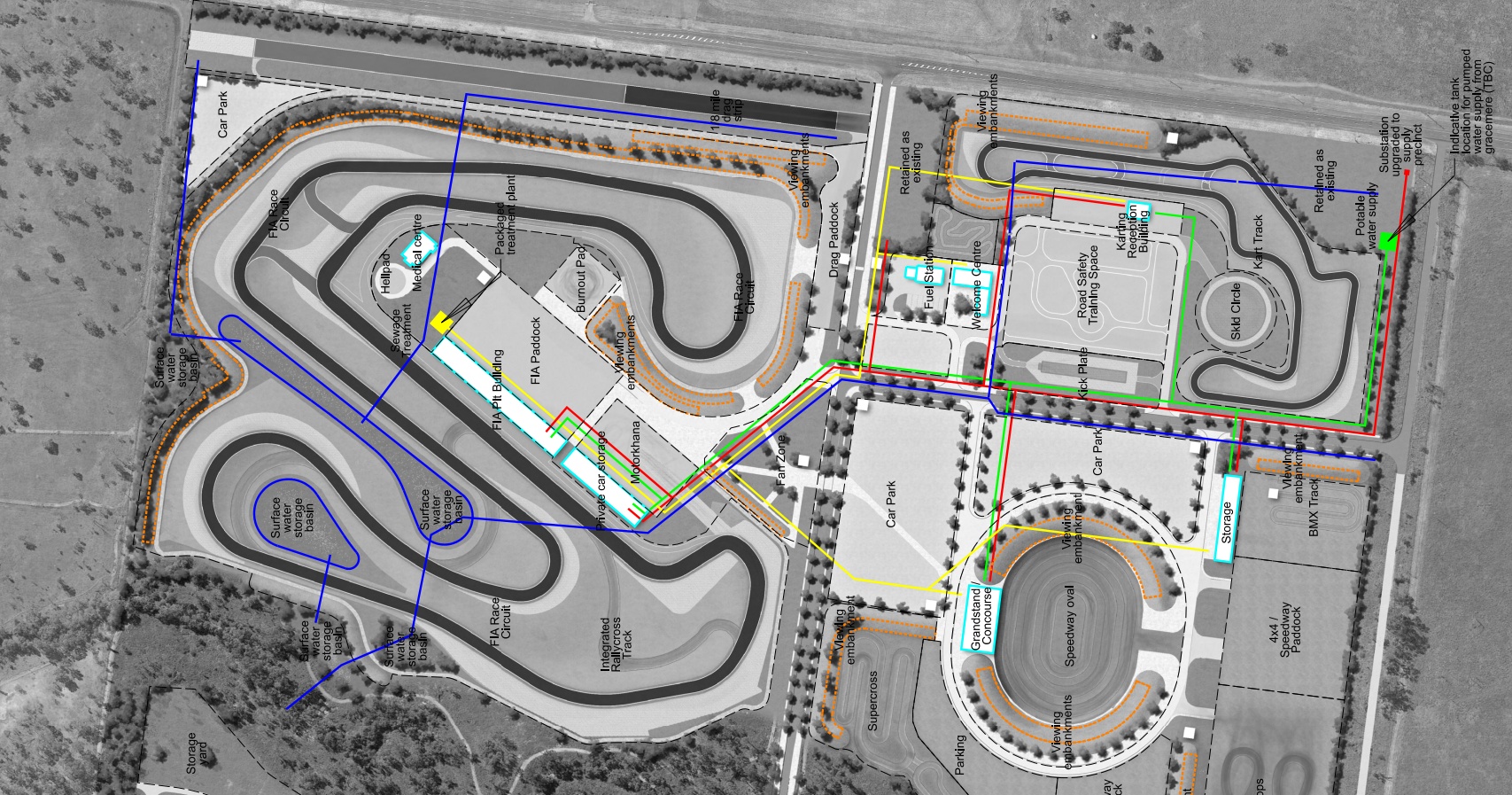
How much does it really cost to build a race track from scratch in 2021, and what are the hurdles that need to be jumped through to make it a reality?
Last week we reported on the state of play in the Willowbank precinct, a $220million project to enhance a multi-discipline motorsport hub, a plan which has ultimately been benched.
This week we are able to take a deep dive into another Queensland-based motorsport precinct, this one destined for the regional Queensland city of Rockhampton, some 600km to the north of Brisbane and 700km south of Townsville.
From the long-held dreams of local enthusiasts to the nitty-gritty technical details, below is a case study focussing on the planning for the project.
The Bouldercombe Dream
Following a callout for suitable land, the Rockhampton Regional Council unveiled its plans for its motorsport precinct at Bouldercombe in August last year, an ambitious project covering many facets of the sport.
The original masterplan included a road course, a kart track, a drag strip, a speedway, driver training facilities and more, with the earmarked site some 20min from the Rockhampton city centre.
Plans for the facility included grandstands, clubhouses, storage facilities and pit buildings, with the site selected on generally flat, stable land, wedged between a major highway and an active quarry.
When announced, the local media reported concerns regarding noise, traffic, and water supply, with the water table a vital issue to nearby residents in the rural setting.
Following this, a Masterplan Report for the Rockhampton Motorsport Precinct was released in November 2020, as prepared by sports venue architects Driven International, which counts former F1 driver Karun Chandhok as a consultant, with support from global consultancy firm Turner & Townsend.
The 63-page document uncovered the many considerations in play when developing a complex, from the overall design to the technicalities, accompanied by a more detailed 338-page preliminary technical assessment of the project.
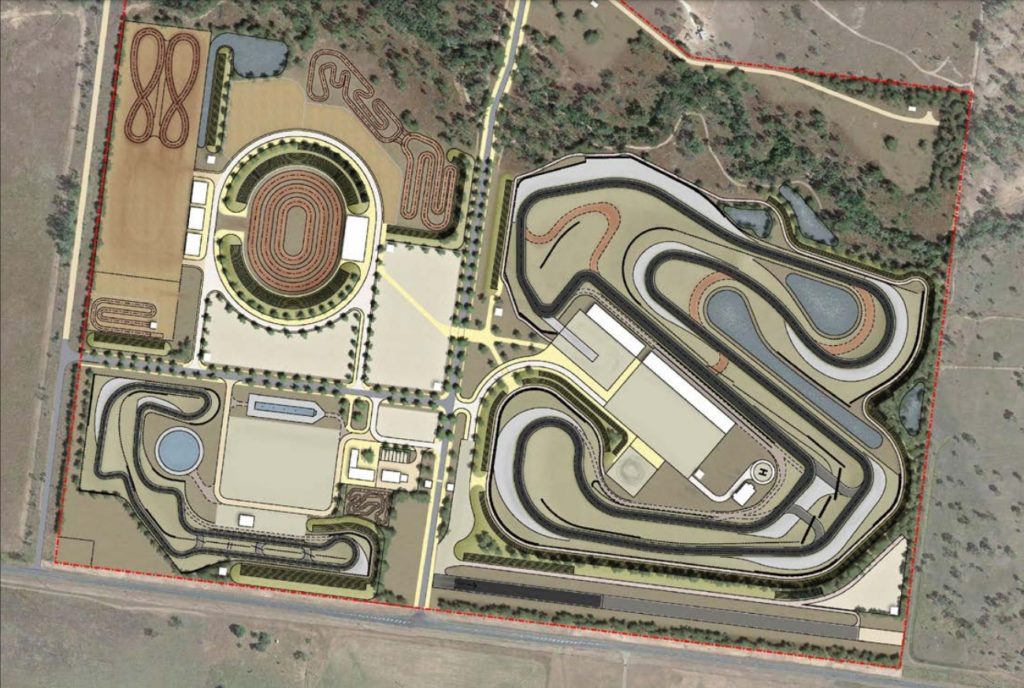
Broadly, the facility would be split into three:
1) Road racing – road course, rallycross & drifting, drag strip (right-hand side of complex)
2) Off-road racing – speedway, supercross & peewee, 4×4 & mudsports (top-left of the complex)
2) Driver experiences – road safety & driver training, karting, welcome & service centre (bottom-left of the complex)
The site itself contained several constraints, mainly revolving around the creek that runs on the western corridor of the block, which includes a bushfire zone, ecological zones, biodiversity corridor and a water creek buffer.
Four different land-use concepts (combinations of the separate disciplines within the land space) were developed for the venue, with considerations including the natural constraints, access to the quarry, and dust mitigation from the off-road racing aspect to the highway and neighbouring properties to the north of the block, with each option extensively appraised.
The venture was also benchmarked against local venues such as The Bend Motorsport Park, Sydney Motorsport Park and the Willowbank Precinct, as well as international venues such as the Bahrain International Circuit, Castle Combe, and the National Corvette Museum in the USA.
Also analysed were proposed venues at Toowoomba and Townsville.
Interestingly the land sizes of the different venues paint the following picture:
- The Bend: 725+ hectares
- Willowbank precinct: 137 hectares
- Sydney Motorsport Park: 109 hectares
- Rockhampton: 100 hectares
A total of 266 of the 369 formal submissions regarding the venue were positive, with the Rockhampton Regional Council formulating a second release of the concept plan due to the community feedback in October 2020.
The updates included a standalone drag strip, a 4WD training area, cut-throughs on the kart track, additional noise barriers, a dedicated burnout pad, and a range of tweaks to layout designs.
Breaking down the planned offering – V2
Road course – 3.1km long, 12metres wide, 14 turn, FIA Grade 3, able to be split into two tracks (2.1km and 1.1km), with an unsealed service road around the perimeter of the track, including dirt shortcuts for rallycross/supermotard, a burnout pad, a multi-function pit lane, sealed paddock and parking, FIA medical centre and helipad, motorkhana area, complete with spectator grass banks. The shorter circuit is specially designed with drifting in mind.
Drag strip – 1/8th mile, now operating independently of the road course, allowing for fewer conflicts regarding usage and track preparation.
Speedway – a 450m long outer circuit (now in an oval shape with 40m long straights) complimented by a smaller track on the inside, surrounded by grass banks and a grandstand/clubhouse plus paddock amenities.
Supercross – a 620m supercross track with jumps, whoops, berms and tabletops to be integrated with a 600m peewee track for juniors and novices, which can be combined for a 1,200m layout.
4×4 and Mudsports – 4×4 driver training trails over natural terrain, which can be used by SUVs, quadbikes, and segways, as well as a twin figure-eight loop for the use of the CQ Mudsportz Club.
Road safety and driver training – featuring low-friction facilities such as a mechanical kick plate and a skid pad, complete with a flexible-use sizeable concrete pad.
Karting – full 1.2km long international-spec track, with the driver training areas doubling up as a paddock and parking area.
BMX and Radio Control Cars – a 350m BMX track, with the RC track to either be a replica of the road course or a dirt buggy track.
Welcome Centre and Service Station – centrally positioned, the Welcome Centre is the operational hub of the venue, with the service station to be the refuelling and charging point of the precinct, encouraging passers-by on the highway to stop by.
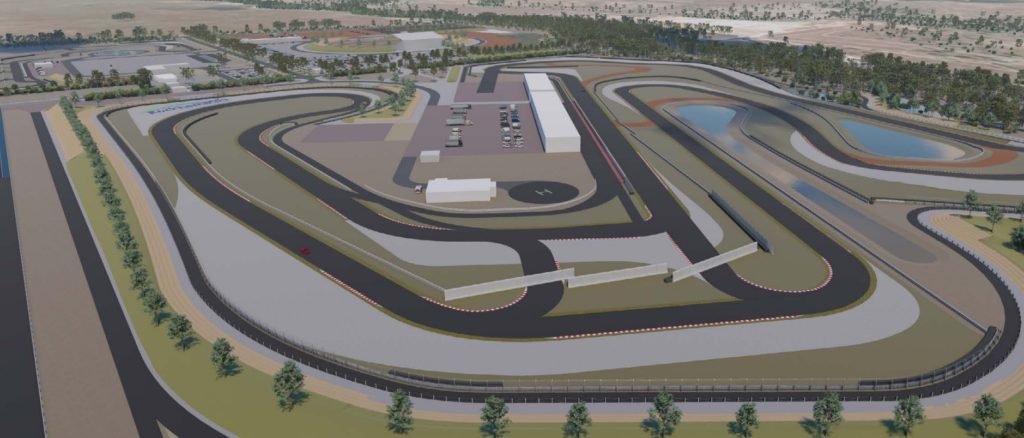
The peak use expectations for each discipline were outlined:
Circuit Racing – 20,000-30,000 spectators, two-day event, 6 events per year
Speedway Oval – 3,000-4,000 spectators, two-day event, 8 events per year
Peewee/Supercross – 2,000-3,000 spectators, two-day event, 12 events per year
Kart Racing – 1,000-2,000 spectators, two-day event, 12 events per year
Drag Racing – 1,000-2,000 spectators, two-day event, 12 events per year
RC Racing – 300-400 attendance, one-day event, 12 events per year
Mud Sports – 200-300 spectators, two-day event, 12 events per year
There would be an expectation of 10,000 to 15,000 vehicles for the best-attended circuit racing event, with provision to be made for 166 campsites.
The car parking allocated on-site (following the Australian Standards) would have a capacity of 4,485 cars during a speedway event, and 4,300 for a circuit racing event, therefore requiring significant off-site park and ride style arrangements for the biggest events.
The report analysed the possible site access flow figures for cars attempting to enter the precinct via the right-hand turn across the highway if travelling from Rockhampton, with traffic management issues discussed.
It also included technical investigations into items such as flooding and stormwater management, bushfire risk, transport and access, infrastructure, environmental issues, cultural heritage, air quality, geotechnical and noise.
From these, a wide range of recommendations were made, including:
- Buffers for flooding from the creek
- Environmental and bushfire considerations to be made regarding the natural vegetation surrounding the creek
- A drainage strategy that encourages the harvesting of rain, with separate filtering methods employed for the paved tracks and dirt surface layouts
- Spill management in the pits and paddocks
- Wheel washing areas in the off-road zones
- Site access considerations, day-to-day and event traffic management
- Parking capacities, with six different parking zones identified
- Utilities such as water, power (including the substation already onsite), sewerage, stormwater and non-potable water
- Strongly recommended that early consultation is undertaken with the listed Aboriginal Corporation, the Darumbal People, to understand any unmapped sites of cultural heritage
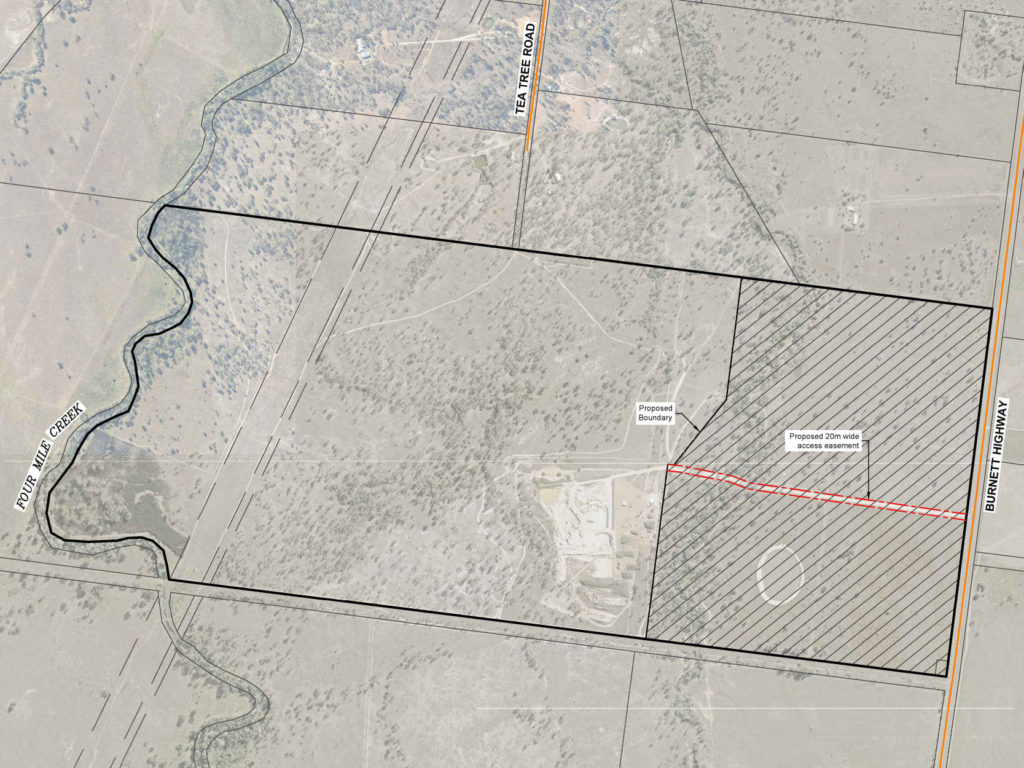
Noise
Forever the thorn in the side of race tracks, the Masterplan Report’s noise technical investigations provided some interesting recommendations, including:
- A permanent drive-by noise monitoring system be installed
- A plan be implemented including operating hours, number of operating days and noise limit targets, as well as periods of respite (such as lunch breaks)
- Further mitigation to be provided by restricting high noise sessions
- The operation of all of the tracks at once should be avoided to minimise noise impact, which should be factored in the operational calendar for the precinct
- Four metre high acoustic barriers along the northern end of the facility would decrease noise levels at nearby residences by 3dB
The Costs
The development strategy and cost summary of the project valued the various portions at:
- Drag Strip: $7,200,000 – $8,000,000
- Road Course (including rallycross & drifting): $72,000,000 – $81,000,000
- Speedway: $13,100,000 – $14,500,000
- 4×4, Mud Sports & Supercross: $17,500,000 – $19,400,000
- Road Safety + Driver Training: $9,500,000 – $10,500,000
- Welcome Centre: $2,400,000 – $2,700,000
- Karting: $7,200,000 – $7,900,000
- Commercial Nodes: Private led development
- Camping & Recreational Area: $621,000 – $686,000
- Enabling Infrastructure: $12,600,000 – $13,900,000
- Total Cost Range: $142,200,000 – $158,500,000
Enabling infrastructure covers costs involved with site preparation, entrances, viewing greens and banks, septic systems, utilities etc.
The masterplan also examines the various ownership, funding, development and operational models that could be utilised, including the different risk levels in play for the Council.
It all comes to nothing…
The project came to a halt on May 12th this year, with the Council focussing on other local priorities, following a year in which COVID-19 ravaged the region’s income, with the Council owned and operated airport severely affected.
Its statement read:
Council will today announce that it will not be going ahead with the purchase of a parcel of land at Bouldercombe earmarked as a potential motorsport precinct.
Mayor Tony Williams said Council’s conditional contract on the site required a decision to be made by the end of the month and Councillors had resolved at yesterday’s meeting not to proceed.
“This wasn’t an easy decision to make, and I want to make it clear at the outset that Council still supports a motorsport precinct, but the timing is not right to push ahead with this at the moment,” Mayor Williams said.
“Council needs to focus on more immediate and substantial infrastructure priorities to sustain and support growth in our region, including key water, sewerage and road projects.”
“Unfortunately, we are constrained by the financial impact of COVID-19 and this is a choice we have had to make – prioritising the “must do’s”.
“I know our passionate motorsport community and motoring enthusiasts will be disappointed to hear today’s news but I want to assure them that Council supports a motorsport precinct for our region and we will continue to progress this in the background.”
“Our immediate focus will be to build on the success of the inaugural Rockynats event and to really make that the best it can be,” Mayor Williams said.
Rockhampton Regional Council has written to local Bouldercombe residents and sporting clubs to notify them of the Council decision.
This said, the local motorsport community was not entirely shocked or disappointed by the call:
A motor mad area
The region has a rich motorsport history, for instance, speedway solos have been campaigned at the Rockhampton Showgrounds since 1925, with the venue also home to speedway of the four-wheeled variety with it being one of the first floodlit venues in the country.
Also local to the area is the Central Queensland Motor Sporting Club, which has been in operation since 1959, catering mainly to motorkhanas and rallying.
For over 20 years, karting has taken place on an 865m local track, while the city’s motorcross club was founded in 1935.
More recent additions to the motorsport scene have included the Gold Rush Hill Sprint, which is set to return from July 10th to 11th, a massive 3km long, 24 corner hillclimb with 200m of elevation changes, located on the Burnett Highway in Bouldercome, a 10-minute drive from the above motorsport precinct.
The Rocky Nats have also been run twice, focusing on big horsepower, show cars, burnouts and drifting.
This plan for the precinct is not the first time Rockhampton has been mentioned as the prospective home of a modern motorsport venue, with the 2017 announcement of a possible Supercars event to be hosted much closer to the heart of the city.
Ultimately, that project was parked in 2019.
Summary
Clearly the area is heavily involved in motorsport, and has a proactive council that has been behind two significant proposals in recent years.
Comparing and contrasting the project to the plans for Willowbank, there are differences in the prospective audiences, one is an existing site, the other is greenfield, while they both are pushed for available space.
For the sake of the sport, hopefully a suitable solution for Rockhampton can be found in the not too distant future.
For further reading, check out the Rockhampton Regional Council website, here.
